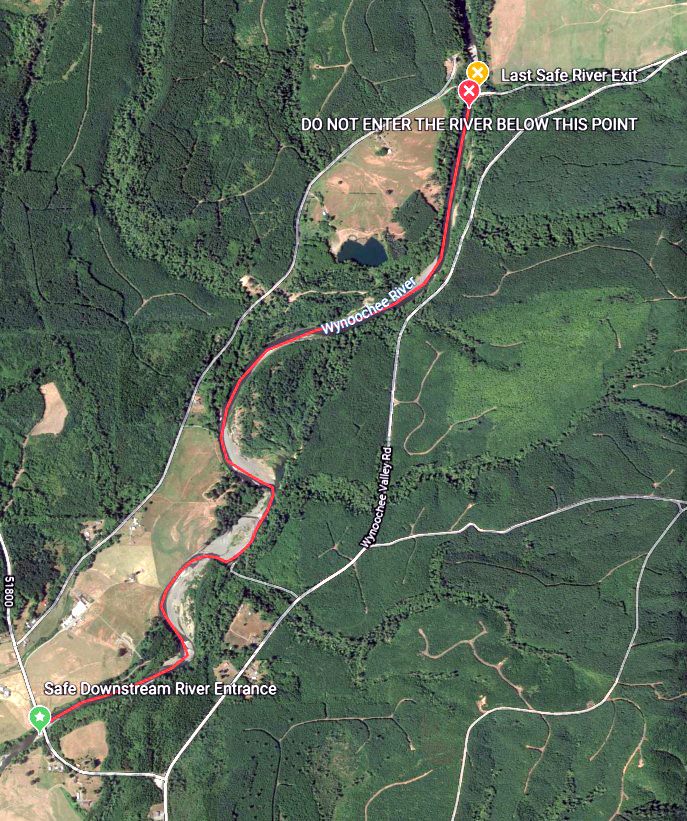WDFW Touts Fish Habitat Work On Satsop, Skookumchuck, Wynoochee
THE FOLLOWING IS A PRESS RELEASE FROM THE WASHINGTON DEPARTMENT OF FISH AND WILDLIFE
Construction work to restore habitat in the Satsop, Skookumchuck, and Wynoochee rivers has wrapped up for the year. This summer, crews worked to restore 12,700 feet of river shoreline and treat 288 acres for invasive plants to benefit salmon and other aquatic species in the Chehalis Basin.

As the second-largest watershed fully within Washington, the Chehalis Basin sustains southwest Washington communities, economies, and some of the most important salmon runs in Washington. It is also home to the Confederated Tribes of the Chehalis Reservation and the Quinault Indian Nation.
The Washington Department of Fish and Wildlife (WDFW) is sponsoring five river restoration projects as part of the Aquatic Species Restoration Plan (ASRP), a science-based plan designed to effectively rebuild and protect a productive ecosystem that is resilient to the impacts of climate change. These five projects are taking place on the Newaukum, Satsop, Skookumchuck, and Wynoochee rivers, and on Stillman Creek, a tributary to the South Fork Chehalis River.
The ASRP Steering Committee with the support of the Chehalis Basin Board received funding from the Washington State Legislature in 2019 through the Department of Ecology’s Office of Chehalis Basin and the Chehalis Basin Strategy to complete these projects. The projects will provide critical habitat for fish and wildlife and inform future river restoration efforts throughout the basin.

The first WDFW-sponsored project was completed in September on the Skookumchuck River restoring over 4,700 feet of shoreline and protecting 102 acres of land to provide critical habitat for salmon and other aquatic species.
This summer was the first season of construction for the Satsop and Wynoochee River Restoration Projects. The second and final season of construction is expected to be completed in 2022, with a combined total of 8,000 feet of shoreline restored.
“We appreciated people’s patience and understanding during in-water construction work this summer on the Satsop and Wynoochee rivers,” said Celina Abercrombie, Chehalis Basin Strategy Manager for WDFW. “Access to sections of these rivers was restricted from mid-June through August, and the same restrictions will be in place next summer to protect public safety during construction.”
To view maps of restricted access areas during in-water construction on the Satsop and Wynoochee rivers, visit WDFW’s website.
Much of this year’s construction on the Satsop took place on over 100 acres of permanently protected land acquired by Forterra to support restoration efforts in collaboration with private landowners. This fall, crews will enhance this area with native plants.

The Grays Harbor Conservation District has also been a steadfast partner on the Satsop and Wynoochee projects by bringing landowners and project partners together to advance these large-scale restoration efforts.
Restoration projects on the Newaukum River and on Stillman Creek will begin in summer 2022.
Each of the WDFW-sponsored river restoration projects includes installing native trees and shrubs, removing invasive species such as blackberry and knotweed, constructing engineered log jams, and reconnecting floodplain and off-channel habitats.
Rivers in the Chehalis Basin provide important habitat for Chinook salmon, coho salmon, and steelhead, as well as other native fish species, including mountain whitefish, rainbow trout, cutthroat trout, Dolly Varden, and bull trout. Olympic mud minnow, a species of concern in Washington, are found in nearby wetlands and sloughs. Freshwater mussels and various amphibian species, including the western toad and Van Dyke’s salamander, may also benefit from these habitat restoration projects.
